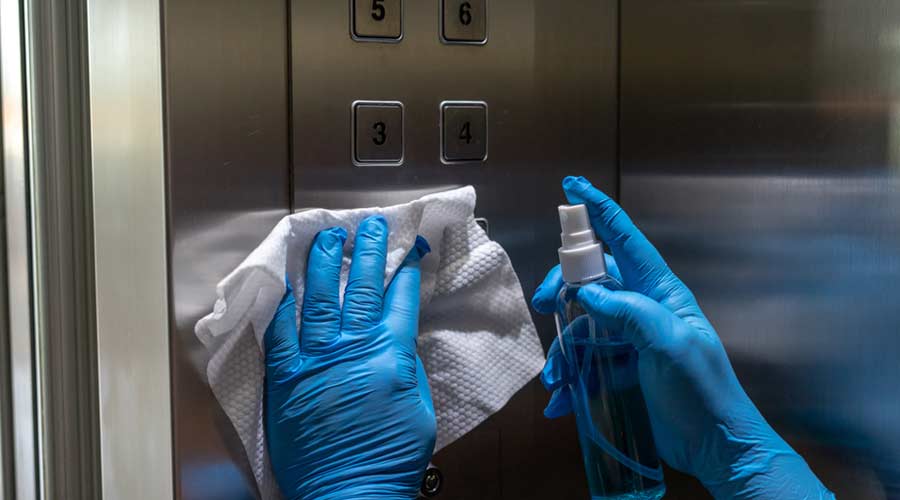
By Deepak Sinha, Regional Market Developer for Anago of Southern California
As cleaning protocols continue to evolve, facility managers must stay informed on OSHA’s latest standards to ensure compliance, protect building occupants, and support frontline cleaning teams.
A New Standard for Clean: Why OSHA’s Guidance Is Evolving
Cleaning is no longer just about appearance – it’s about health, safety, and liability. In the wake of the COVID-19 pandemic and amid ongoing concerns about workplace exposure to hazardous chemicals and pathogens, the Occupational Safety and Health Administration (OSHA) has made critical updates to its cleaning and chemical safety guidance. These changes directly impact how facilities are cleaned, how cleaning products are handled, and how workers are protected.
For facility managers, this means that your cleaning protocols, training systems, and chemical inventory processes must meet a higher standard. OSHA’s latest guidelines, including a significant revision to the Hazard Communication Standard (HCS), aim to reduce confusion, improve transparency, and protect the individuals who maintain our buildings.
Understanding the Revised Hazard Communication Standard
In July 2024, OSHA finalized a long-awaited update to its Hazard Communication Standard (29 CFR 1910.1200), aligning it with the United Nations’ Globally Harmonized System (GHS) of Classification and Labeling of Chemicals, Revision 7. This move enhances consistency in chemical labeling and expands the types of hazards that must be communicated.
Under the new rule, all cleaning products must be clearly labeled with updated hazard pictograms and safety language. Safety Data Sheets (SDS) must reflect these changes, and every facility must ensure that frontline cleaning teams can locate and understand them. If you haven’t audited your SDS documentation this year (or retrained your staff on chemical safety) now is the time.
These updates are not cosmetic; they are legal requirements. Improper labeling or failure to provide current SDS can result in fines, but more importantly, it puts cleaning staff at risk for exposure to irritants, corrosives, or respiratory hazards.
Chemical Exposure and PPE: Sharpening the Focus on Worker Safety
Facility cleaning teams face daily exposure to chemical agents that, if not handled correctly, can cause lasting harm. That’s why OSHA continues to emphasize proper use of personal protective equipment (PPE) and compliance with respiratory protection standards.
According to OSHA’s Respiratory Protection Standard (29 CFR 1910.134), workers who use respirators, whether for spraying disinfectants or fogging, must undergo medical evaluations and annual fit testing. PPE isn’t a one-size-fits-all solution; gloves, goggles, and masks must be task-specific and adequately maintained.
For facility managers, this means routinely assessing cleaning tasks, confirming that the correct PPE is available, and ensuring compliance is documented. It also means evaluating whether any cleaning agents can be swapped for safer alternatives – a step OSHA encourages under its hierarchy of controls.
Infection Control as a Long-Term Mandate
Although the emergency COVID-19 workplace standard has expired, OSHA continues to urge employers to take proactive steps under the General Duty Clause to protect workers from infectious diseases. In practice, this means maintaining written disinfection protocols, particularly for high-traffic or high-touch areas such as elevator buttons, restroom fixtures, break rooms, and shared workstations.
Using EPA-registered disinfectants is no longer a recommendation – it’s a baseline expectation. This involves ensuring that staff know how to apply these products correctly, including following contact times and avoiding hazardous chemical combinations.
Incorporating infection control into your facility’s overall safety strategy isn’t just about illness prevention; it reflects your commitment to occupant wellbeing and operational excellence.
The Training Gap: OSHA Wants More Than a One-Time Walkthrough
One of the most critical areas OSHA inspectors evaluate is training. Too often, training is treated as a one-time orientation task when it should be ongoing, multilingual, and documented.
Every time you introduce a new cleaning chemical, a new disinfecting process, or a change in PPE requirements, staff must be retrained. Annual refresher training is now a best practice and a de facto requirement for avoiding compliance violations.
Your team’s ability to understand hazard labels, read an SDS, and properly don PPE can’t be assumed. It must be verified and logged. For managers, this means investing time and resources in regular training and tracking systems.
Compliance as a Culture, Not a Checklist
Compliance isn’t just about meeting minimum standards to avoid fines – it’s about creating a workplace culture where cleaning staff feel safe, supported, and equipped to do their jobs effectively. A well-maintained cleaning program reinforces broader facility goals: operational efficiency, employee satisfaction, and risk reduction.
It also pays off in reputation. Whether you're managing a school, hospital, government building, or corporate office, a clean and OSHA-compliant environment sends a clear message to stakeholders: your facility takes safety seriously.
In today’s competitive labor and occupancy markets, that trust is invaluable.
Final Thoughts: Leading from the Frontlines
As OSHA raises the bar on workplace safety, facility managers are uniquely positioned to lead the charge. By aligning your cleaning program with OSHA’s latest guidelines (from chemical safety to infection control) you not only meet legal standards but also set a tone of accountability and care across your organization.
Cleaning is no longer background noise. It’s center stage. And the managers who embrace this shift (who champion their cleaning teams and embed safety into every routine) will be the ones whose facilities stand out for all the right reasons.
Deepak Sinha is the Regional Market Developer for Anago of Southern California (“SoCal”), part of the Anago Cleaning Systems brand supporting over 1900 franchises and independent contractors across the U.S. and Canada. For more information about Anago of SoCal, visit www.AnagoCleaning.com/socal.
posted on 8/5/2025

 Celebrating BSCAI's 60th Anniversary eBook
Celebrating BSCAI's 60th Anniversary eBook The Down and Dirty on Cleaning in Virus Season
The Down and Dirty on Cleaning in Virus Season How Surfactant Use is Expanding in Commercial Cleaning
How Surfactant Use is Expanding in Commercial Cleaning